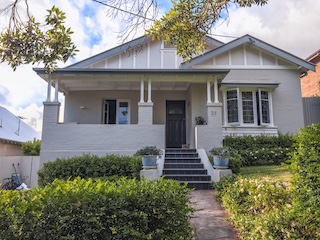Springwood suburb profile
Springwood is a vibrant suburb located in Logan City, approximately 20km south of Brisbane's CBD. Known for its family-friendly atmosphere and convenient amenities, Springwood offers a mix of residential, commercial, and recreational spaces. The suburb is home to several shopping centres, including the popular Springwood Mall, and boasts a range of dining options and local businesses. With easy access to the Pacific Motorway, Springwood provides excellent connectivity to both Brisbane and the Gold Coast. Its combination of suburban comfort and urban convenience makes it an attractive choice for families, professionals, and retirees alike.
Springwood property market performance
Current median dwelling price$685,500Past 3 months
Property growth+6.8%Past 12 months
Springwood’s property market has experienced notable growth over the past 12 months, with house values increasing by 9.4%. The current median house price stands at $950,000. Although the median unit price is not available, unit values have risen by 12.4%, indicating a positive trend in the unit market as well.
Sales activity has been moderate, with 44 houses and 3 units sold in the past 12 months. Houses are taking a median of 42 days to sell, while units are moving faster with a median of 28 days on the market, suggesting a quicker turnover in the unit sector.
The rental market in Springwood has also seen changes, with average rent for houses increasing by 9.2% to $650, while unit rents have risen by 2.0% to $510 over the last 12 months, reflecting a stronger demand for house rentals.
| Houses | Units | |
|---|---|---|
Median price Past 3 months | $956K | N/A |
Change in value Past 12 months | 8.1% | 5.4% |
Sold Past 3 months | 38 | 3 |
Median days on market Past 12 months | 42 | 31 |
Average rent Past 12 months | $650 | $510 |
Change in rent Past 12 months | 9.2% | 1.0% |
5 year median price trend for houses and units
Springwood demographics
Springwood, located in the Logan City area of Queensland, is a suburb that offers a balanced lifestyle with a mix of urban convenience and suburban tranquility. With a population of 9,710 and a median age of 40, Springwood is home to a mature community that values both family life and accessibility to city amenities. The suburb is well-suited for families, with 42.4% of households being couple families with children, and 38.9% being couple families without children, indicating a strong family-oriented environment.
The housing market in Springwood is diverse, with a significant portion of properties being owned outright (29.8%) or with a mortgage (40.0%). This reflects a stable community with a mix of long-term residents and new homeowners. Additionally, 30.1% of the properties are rented, providing options for those seeking flexibility or temporary accommodation. The median total household income of $1,736 per week suggests a comfortable standard of living for its residents.
Springwood's community is further characterized by its variety of family structures, including 17.4% one-parent families and a small percentage of other family types. The suburb's location offers easy access to local schools, shopping centers, and parks, making it an attractive choice for families and individuals seeking a well-rounded lifestyle. With its blend of family-friendly amenities and convenient access to Brisbane, Springwood continues to be a desirable place to live for those seeking a harmonious balance between work and leisure.
Springwood infrastructure, key developments and investment opportunities
Springwood is experiencing significant developments that are likely to impact its property market. The suburb is undergoing a transformation as part of its designation as a Principal Activity Centre (PAC), with plans for new low-rise office spaces, residential apartments, and commercial areas near the Springwood bus station. This redevelopment aims to create a more vibrant, mixed-use precinct that could boost local property values and attract new residents.
The suburb's strategic location between Brisbane City and the Gold Coast, coupled with its proximity to the Pacific Motorway, enhances its appeal to both residents and businesses. Recent infrastructure improvements, including upgrades to public transport facilities and the rehabilitation of Slacks Creek, are likely to increase the area's livability. These developments, combined with Springwood's existing amenities such as shopping malls, schools, and parks, position the suburb as a growing hub in Logan City with potential for sustained property demand and value growth.
Springwood rental market trends
The rental market in Springwood has experienced moderate growth, with house rents increasing by 9.2% over the past year to $650 per week, while unit rents have seen a modest rise of 2.0% to $510 per week. With its strategic location and ongoing development, Springwood continues to attract renters and investors seeking stable returns in a well-connected suburb.
Suburbs near Springwood
Some popular suburbs near Springwood include:
How does Springwood compare to nearby suburbs?
- Median house prices: Springwood’s median house price is 30.1% higher than Slacks Creek’s.
- Median unit prices: Springwood’s median unit price is 1.2% higher than Woodridge’s.
- House price growth: Property prices in nearby Slacks Creek have risen 3.8% more than in Springwood over the past year.
- Unit price growth: Property prices in nearby Slacks Creek have risen 23.4% more than in Springwood over the past year.
- Selling speed for houses: Properties in nearby Slacks Creek are selling 42.9% faster than in Springwood.
- Selling speed for units: Properties in Springwood are selling 3.1% faster than in Woodridge.
- Investment considerations: In Springwood, the rental yield for house is 4.3% lower than the Brisbane average, while the rental yield for units is 17.3% lower.
- House price growth: Over the past 12 months, house prices in Springwood have grown 14.7% lower than the average rate of growth across Brisbane.
- Unit price growth:Over the past 12 months, unit prices in Springwood have grown 30.5% lower than the average rate of growth for units across Brisbane.

